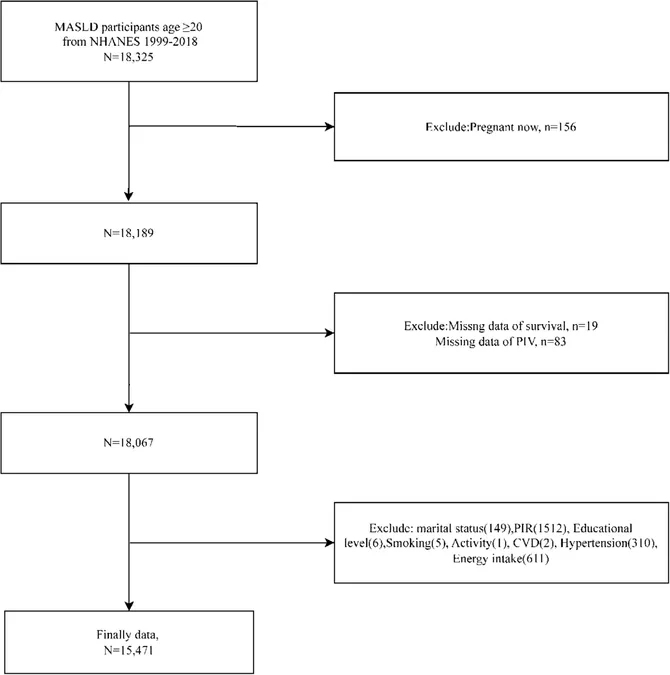
The Hidden Risks of MASLD: A Wake-Up Call for American Health
2025-07-01
Author: Wei
What is MASLD and Why Is It Important?
Metabolic Dysfunction-Associated Steatotic Liver Disease (MASLD) is a groundbreaking term officially approved in 2023, focusing on the metabolic dysfunction behind this condition, which previously fell under the controversial label of non-alcoholic fatty liver disease (NAFLD). With over a third of adults globally estimated to have MASLD, and projections indicating over 55% within two decades, this disease is set to take a heavy toll on healthcare systems in the coming years.
A Silent Epidemic: Statistics and Costs
MASLD and its severe counterpart, metabolic dysfunction-associated steatohepatitis, are now leading causes of cirrhosis, liver transplants, and liver-related deaths in the U.S. The economic burden is staggering, with direct healthcare costs soaring beyond $103 billion annually, a figure that's only likely to rise.
Systemic Inflammation: The Overlooked Culprit
Recent studies highlight that MASLD isn't just a liver issue—it's linked to serious systemic health risks, including cardiovascular disease, chronic kidney issues, and various cancers. Immune dysregulation and chronic inflammation play crucial roles in MASLD's development, with inflammatory markers like C-reactive protein (CRP) indicating significant risks for complications.
New Biomarkers for Assessing Risk: The PIV Factor
The Pan-Immune-Inflammation Value (PIV) is a revolutionary metric derived from specific blood cell counts, showing promising links to mortality rates for MASLD patients. While earlier studies focused on simpler markers, PIV combines multiple immune factors, potentially offering a more comprehensive risk assessment.
Key Findings from NHANES Study
Utilizing data from the National Health and Nutrition Examination Survey (NHANES), researchers found that higher PIV correlates significantly with increased all-cause mortality among MASLD patients. With an average follow-up of over 8 years revealing 2,438 deaths, this study emphasizes that understanding PIV values can drastically change how we evaluate mortality risk.
Striking Results: The PIV and Mortality Connection
Patients in the highest quartile of PIV showed a shocking 27.3% increase in all-cause mortality risk, with cardiovascular deaths being particularly pronounced. The research demonstrated nonlinear relationships between PIV and survival rates, hinting at a U-shaped association where both high and low PIV values present dangers.
Socioeconomic Factors: A Layer of Complexity
Interestingly, participants with lower socioeconomic status saw an even more pronounced link between PIV and mortality, suggesting that economic disadvantages compound the risks posed by MASLD. This highlights an urgent need to address social determinants of health in therapeutic strategies.
A Call to Action: Addressing MASLD Head-On
As MASLD technologies evolve and understanding of its complexities advances, it's crucial for medical professionals to incorporate insights from studies like this one. Identifying risk factors early for patients will empower timely interventions, potentially saving lives in a population rapidly succumbing to this silent crisis. The lethal trio of inflammation, metabolic dysfunction, and socioeconomic status demands our utmost attention.
The Future of MASLD Treatment and Research
As research continues to unfold, greater emphasis must be placed on personalized medicine for MASLD patients, integrating lifestyle modifications with advanced biomarkers like PIV. Future studies must also explore the psychological and community aspects of care to fully tackle the multi-dimensional challenges posed by this growing epidemic.



 Brasil (PT)
Brasil (PT)
 Canada (EN)
Canada (EN)
 Chile (ES)
Chile (ES)
 Česko (CS)
Česko (CS)
 대한민국 (KO)
대한민국 (KO)
 España (ES)
España (ES)
 France (FR)
France (FR)
 Hong Kong (EN)
Hong Kong (EN)
 Italia (IT)
Italia (IT)
 日本 (JA)
日本 (JA)
 Magyarország (HU)
Magyarország (HU)
 Norge (NO)
Norge (NO)
 Polska (PL)
Polska (PL)
 Schweiz (DE)
Schweiz (DE)
 Singapore (EN)
Singapore (EN)
 Sverige (SV)
Sverige (SV)
 Suomi (FI)
Suomi (FI)
 Türkiye (TR)
Türkiye (TR)
 الإمارات العربية المتحدة (AR)
الإمارات العربية المتحدة (AR)